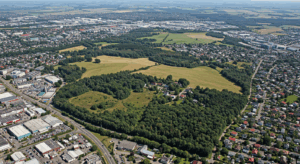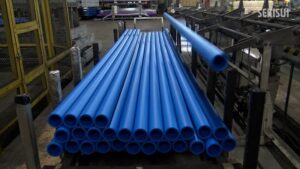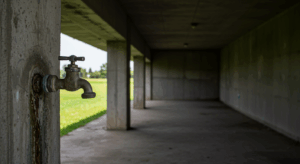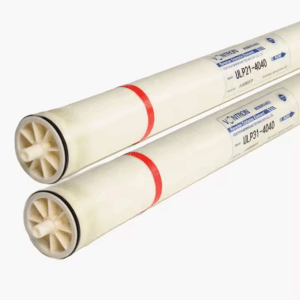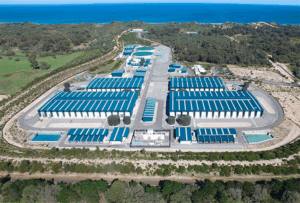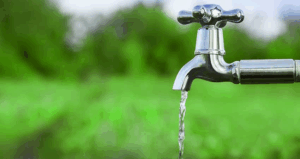“Tokyo and Osaka: Affordable Water Rates and Seemingly Stable Services – But What’s Hidden Beneath? Uncovering Two Critical Issues”
At first glance, the water services in Tokyo, Osaka, and other major Japanese cities appear to be in a privileged state.
Urban water rates remain below the national average, and safe drinking water flows reliably from taps around the clock. This is the result of decades of effort and investment and stands as a symbol of Japan’s globally respected urban infrastructure.
However, behind this “stability,” there are two significant challenges we cannot afford to ignore.
This article highlights the limits of “maintaining the status quo” in urban water utilities and explores three potential pathways for solutions: “Public Investment with Facility Minimization,” “DX + Rehiring Programs,” and “Concession Models,” drawing also on advanced international case studies.
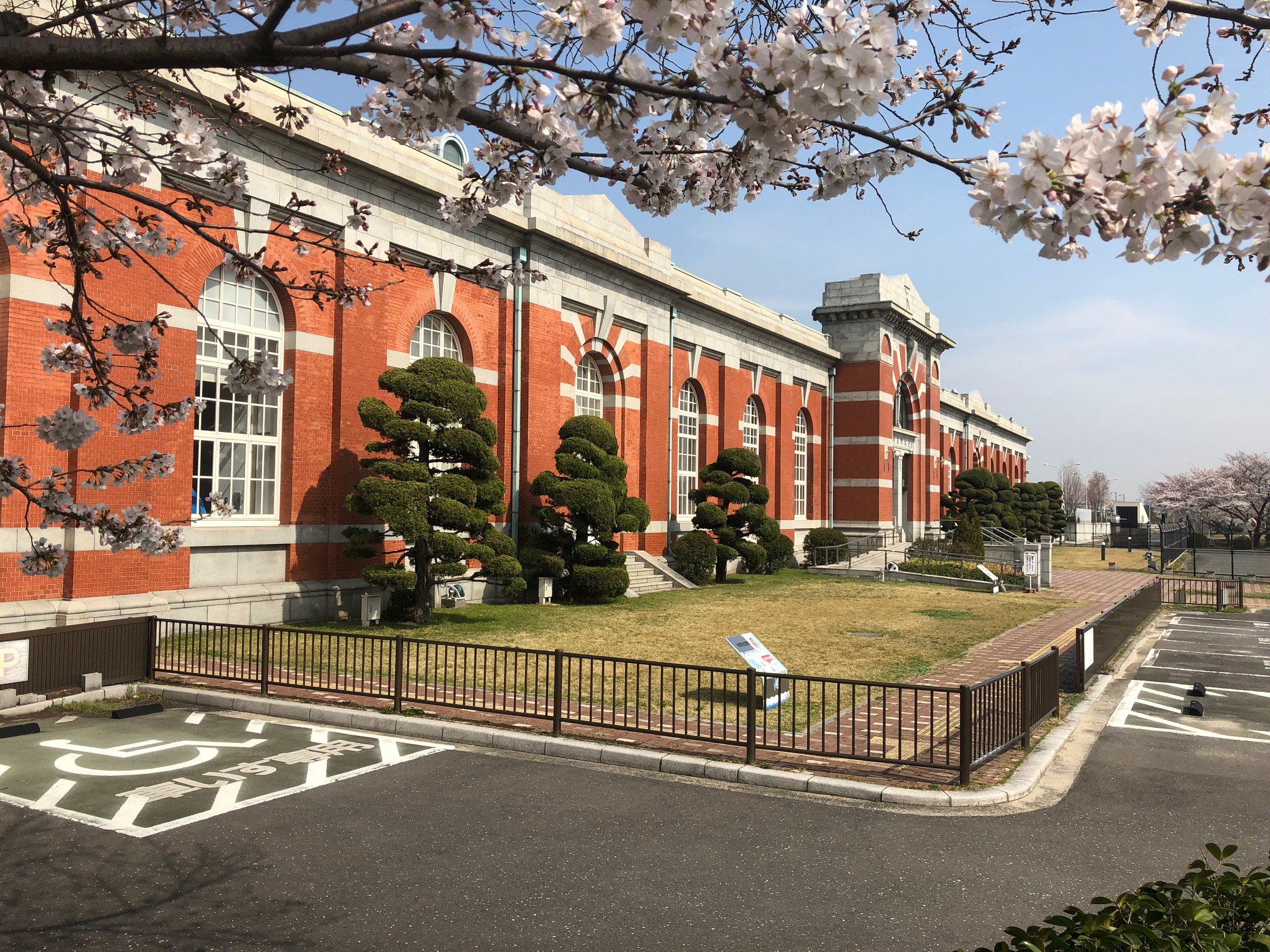
1. Two Major Challenges Overlooked by “Status Quo Advocates”
Some argue that the affordable rates and stable service records justify keeping the current system as is. However, data reveals two serious challenges that, if left unaddressed, could impose massive future burdens.
1-1. Pipeline and Facility Renewal Peak Approaching (Around 2040)
Japan’s water infrastructure was largely built during its period of rapid economic growth. As a result, many pipelines and facilities are reaching the end of their statutory service life (40 years), with a renewal peak anticipated around 2040. While Tokyo and Osaka are proactively replacing aging pipelines, the following conditions remain:
- Current Aging Pipeline Status: 19% of water pipes in Tokyo’s 23 wards and 21% in the Osaka Metropolitan Area have exceeded 40 years in service. The national average stands at 22%, with around 50,000 leakage incidents reported annually. This data signals an urgent need for renewal.
- Seismic Resistance Lag: The nationwide seismic reinforcement rate remains low at 44%, posing serious risks of water outages during major earthquakes.
1-2. Aging Workforce and Accelerating Retirements (30% of Senior Engineers Retired in the Last Decade)
Maintaining and renewing water facilities requires highly skilled technical staff. Unfortunately, Japan’s water utilities are grappling with severe workforce aging.
- Workforce Aging: The average age of technical staff is 51.3 in Tokyo and 49.8 in Osaka, higher than the national average of 48.6. One in three technical employees is over 60, signaling an impending era of mass retirements.
- Knowledge Transfer Challenge: Approximately 30% of senior engineers who supported the water sector have retired over the past decade, making skills transfer to younger generations an urgent issue.
These two challenges clearly demonstrate that “maintaining the status quo” simply delays inevitable future burdens.
Table: Water Rates and Challenges in Tokyo and Osaka
| Item | Tokyo (23 wards) | Osaka Metropolitan | National Average |
|---|---|---|---|
| Basic Rate (per 20m3/month) | 122 yen/m3 | 131 yen/m3 | 182 yen/m3 |
| Pipelines Over 40 Years Old | 19% | 21% | 22% |
| Average Age of Technical Staff | 51.3 years | 49.8 years | 48.6 years |
Maintaining the status quo in this situation means postponing essential investments and passing a heavy burden onto future generations. While rates appear low, this doesn’t indicate financial health?it likely reflects hidden risks accumulating beneath the surface.
2. Strategy A: Tackling Aging Infrastructure Through Public Investment and Cost-Effective Facilities
So, how can we overcome this challenge? The first strategy is “optimizing public investment and transitioning to low-cost facilities.” This approach focuses on breaking through the current situation by “replacing outdated facilities with cost-effective alternatives combined with public investment.”
2-1. Leveraging New Funding Mechanisms: Government Grants and Municipal Bonds
While water utilities generally operate under a self-financing model, active use of national subsidy programs and municipal bonds?including new tax-funded frameworks?is now being considered. Especially for large-scale projects like pipeline renewals and seismic upgrades, government support will be indispensable.
2-2. Reducing CAPEX by 20?30% with HDPE Pipes and New Technologies
For pipeline renewal projects, significant cost reductions can be expected by actively adopting new technologies rather than sticking to conventional ductile iron pipe methods and materials.
- HDPE Pipe Adoption: High-density polyethylene (HDPE) pipes are gaining market share. With excellent seismic resistance and durability, they offer a cost-effective alternative to traditional ductile iron pipes.
- No-Dig (Trenchless) Methods: Technologies like pipe jacking and CIPP (Cured-in-Place Pipe) or spiral pipe insertion minimize excavation needs. These methods can shorten construction periods, reduce traffic disruptions, and are expected to cut CAPEX by 20?30%. In urban Japan, where conventional open-cut renewals cost about 400 million yen per kilometer, these techniques could offer significant savings.
- Beyond pipeline technology, similar innovations in water treatment systems are needed. Developing and adopting new purification technologies that maintain water quality while reducing costs is strongly recommended.
By combining these measures, municipalities can efficiently advance essential infrastructure investments and address current challenges through “low-cost facility upgrades plus public investment.”
3. Strategy B: Addressing Workforce Aging Through Digital Transformation (DX) and Rehiring
The second strategy is a new human resource approach that combines digital technologies (DX) with the rehiring of experienced retirees. This could serve as a prototype project where “AI acts as a mentor,” balancing skills transfer with operational efficiency.
3-1. Tokyo and Osaka’s Digital Initiatives and AI Adoption
Both the Tokyo Metropolitan Government and the Osaka Regional Waterworks Bureau are advancing digitalization across various water utility sectors. In response to workforce aging, they are increasingly looking to AI applications. AI can learn from past data and veteran engineers’ expertise to support maintenance optimization and anomaly detection, helping to bridge the technical knowledge gap and enable more efficient operations.
3-2. Roadmap for Training Young Engineers with AI Assistance
AI doesn’t just improve efficiency?it can also serve as a “mentor” for less experienced young engineers. By digitizing veteran know-how into a database and providing AI support, younger staff can acquire skills more quickly through practical, hands-on learning. This paves the way for expanded digital adoption in large cities like Tokyo and Osaka.
3-3. Reducing On-Site Workforce with IoT and Digital Monitoring
Utilizing IoT (Internet of Things) sensors for real-time monitoring of reservoir water levels, pressure, and water quality makes remote management possible. This not only reduces the number of staff required for on-site inspections but also allows for quicker detection of abnormalities.
3-4. Rehiring Retired Experts and Building a Skills Database
A system is being developed to rehire retired veteran engineers and store their wealth of experience and skills in a skills database (Skills DB). This setup enables smooth knowledge transfer and allows the organization to efficiently share and utilize expert insights.
3-5. Caution Regarding Foreign Workforce Utilization
Given that water utilities are critical national infrastructure and often involve access to sensitive information, employing foreign personnel requires careful consideration. From a security standpoint, reckless hiring should generally be avoided.
4. Strategy C: Considering Concession Agreements to Address Aging Infrastructure and Workforce Shortages
The third strategy involves utilizing private capital and expertise through “concession agreements.”
4-1. Overview of Concession Agreements
Concessions are a model where municipalities retain ownership of public facilities but grant operating rights to private companies. Benefits include reduced fiscal burdens through private funding, operational efficiencies from private sector management, and improved service quality. However, significant risks are also present.
4-2. Concerns When Adopting Concessions
- Sudden Rate Hikes: Private companies prioritize profit, posing a risk of substantial rate increases.
- Investment Shortfalls: Profit-driven management may lead to reduced infrastructure investment, degrading service quality.
- Information Asymmetry and Oversight Gaps: Inadequate disclosure from private operators can hinder proper monitoring by municipalities and residents.
- Re-Municipalization Costs: If issues arise and re-municipalization becomes necessary, governments may face hefty compensation and rehiring costs.
4-3. Global Failures: 250 Cities Returned to Public Management
While concession models have been adopted worldwide, many failures have occurred. The fact that 250 cities have reverted to public management highlights these challenges. Here are some examples:
- Cochabamba, Bolivia: Massive riots erupted following sudden rate hikes, leading to contract termination.
- Jakarta: Private companies cut back on investments, causing water quality to deteriorate and leakage rates to soar to 40%.
- Paris: Spiraling water rates prompted re-municipalization, resulting in three years of budget deficits due to compensation and rehiring costs.
- Peru and Chile Mining Regions: Water source conflicts escalated into anti-government movements.
These cases underscore the need for extreme caution when considering the privatization of critical lifeline services like water supply.
5. Overseas Case Studies on Aging Infrastructure Solutions
Countries worldwide are experimenting with various approaches to address the aging infrastructure and operational challenges facing Japan’s water utilities. Careful evaluation and pilot implementation of foreign technologies that prove beneficial for Japan’s context are recommended for nationwide adoption as soon as possible.
- 1. Vitens, Netherlands: DMA + AI Leakage Monitoring
- Core Technology: Establishing District Metered Areas (DMAs) for every 300?600 households and using AI to analyze acoustic and pressure waveforms to detect leaks.
- Why It Works in Japan: Although urban Japan already maintains low leakage rates (7?10%), further reductions are achievable. DMA setups require no civil works and, with sensors and communications alone, can significantly cut OPEX. Installation costs are estimated at 300,000 to 500,000 yen per site, with a payback period of a few months.
- 2. UK and Australia: CIPP / Spiral Pipe Trenchless Rehabilitation
- Core Technology: Techniques like pulling resin liners through existing pipes or inserting HDPE spirals without excavation, extending seismic and corrosion resistance by 50 years.
- Why It Works in Japan: Open-cut pipeline renewals in urban Japan cost around 400 million yen per kilometer. Trenchless methods can reduce this by 30?50%, making them ideal for large-scale urban updates.
- 3. Portland, USA / Lyon, France: In-Pipe Micro Hydropower
- Core Technology: Installing small turbines (5?50 kW) in existing transmission pipes at pressure reduction zones to offset pump energy use.
- Why It Works in Japan: Given Japan’s many high-elevation pipelines, applicability is high. Turbines can be inserted without excavation (using bypass pipes), and renewable energy subsidies may help reduce CAPEX.
These international case studies represent a true “technology-first” mindset for tackling aging infrastructure with a “no-dig, lower CAPEX and OPEX” approach. Each has already proven effective while meeting strict water quality standards and regulations, suggesting a relatively low hurdle for adoption in Japan.
6. Shaping the Future of Urban Water Utilities
Addressing the aging infrastructure of urban water utilities requires more than just repairing old facilities. We need to carefully consider how to control the enormous costs involved and how to transition toward systems that require less OPEX (operating expenses) over the long term.
With the ongoing aging of the workforce, it’s essential to invest public funds where necessary and prioritize the development of low-maintenance facilities. The money saved from reducing operational costs can then be redirected toward future infrastructure investments and technology development. The key lies in shifting toward a more cost-efficient operating model overall.
Think of it like replacing regular light bulbs with LED ones. While there’s an upfront cost, LED bulbs significantly reduce electricity bills and last much longer, cutting down on maintenance planning and labor costs. Similarly, investing early in low-OPEX infrastructure can dramatically reduce future capital needs.
This kind of proactive approach should also be actively introduced in the water industry. Of course, public projects come with risks, and some initiatives may face setbacks along the way. But as long as we keep striving to improve our water systems, we can reduce future infrastructure costs even further—returning saved funds to initial investments or reallocating them to other infrastructure sectors. (For now, let’s set aside the debate over the independent accounting principle.)
Is the future bleak? Absolutely not. As long as we maintain the determination to “make things better,” we can sustain a reliable water supply. Predictions that depict a gloomy future under population decline and aging infrastructure are based on outdated technologies and operational models. By shedding old mindsets and adopting new “management wisdom,” we can build a truly sustainable water system.
7. Conclusion
Breaking out of the current situation won’t be easy—but it’s far from impossible. What matters is that we keep searching for the best possible solutions and remain flexible enough to change direction when needed. Embracing the idea of reducing basic infrastructure investment through innovation and technological development is the mindset that will brighten the future of Japan’s water utilities.
> Please feel free to share your thoughts or questions about this article in the comments section!
